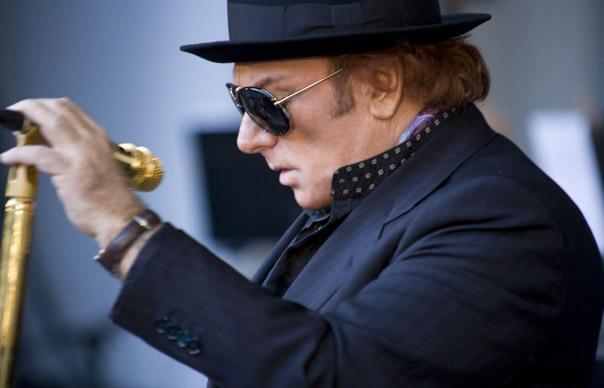MOONDANCE
WARNER BROS, 1970
Living in Woodstock with new wife Janet Planet, Morrison recruits a band of vibrant young local musicians. Early in the sessions he breaks messily from Merenstein, but the record he delivers is a classic: a clean, punchy blend of soul, jazz, folk and country rock.
JEF LABES (PIANO, ORGAN): Van was living in a house on top of Ohayo Mountain. We’d rehearse in his living room, and you could look down for miles into this big reservoir. It was just a gorgeous place to make music. There was a simplicity to it. He’d come out of Astral Weeks, which had only sold 10,000 copies, so he was hanging by a thread. On the first session in New York we recorded with most of the guys on Astral Weeks – fantastic guys, all experienced jazz players – but it was obvious that everything was going to sound like Astral Weeks again, and there was a feeling among us that that was not going to wash. Van was pretty firm that he wanted to use us and not them, so there was a stand-off with Lew. After that, Van was running the show.
He definitely was trying to create something radio- friendly. He owed that to the record company and himself. A lot of the sound was kind of a tribute to The Band, because Van was very close to those guys and loved their music. Their very simple yet expressive work was the guiding principle of Moondance. I remember “Moondance” itself was a big question mark. It was jazzy, and didn’t seem to belong in the pack. The first time we recorded it, it came out really well, but Van thought there must be a catch. So we did it about a dozen times, and ended up going back to the first one. He liked to sing live along with the track, because Sinatra did that. He loved having a first-take vocal. He was looking for the magic.
GARY MALLABER (DRUMS): I don’t remember a bad moment. He was mellow, he was pleasant, flowing with everything. As soon as he hit that top falsetto on “Crazy Love”, I said to Van, “Look, there’s a set of vibraphones in the corner just screaming to be on this song,” and he was gracious. “OK, go ahead. Sure.” It gave it another texture. He let us sing the background vocals on “Caravan”. On “Into The Mystic” he overdubbed the horn through a Leslie speaker. When Van began that song on the acoustic guitar and started singing, that’s when I knew something extraordinary was happening. We’d messed with it a little bit in Woodstock, but it was nothing like going after it in the studio. It was like the difference between a flight simulator and actually taking off! The hairs on my arms shot up. I was lost in listening to the cut and playing on it at the same time. It was like time-travelling.
JOHN PLATANIA (GUITAR): The high point for me was a jam called “Caledonia Soul Music”, which was never released. Van was doing his stream-of-consciousness thing, it went on for about 15 minutes. I remember grabbing a beer bottle and using that as a slide. It was wild. The only direction he gave me on the whole album was, “Don’t step on my vocals!”
ELLIOT SCHEINER (ENGINEER): He never said a word about sonics. He would never say, “I don’t like that drum sound, or the way the guitar sounds.” It wasn’t as important to him as the actual notes. We finished just before Christmas, and there was a tight deadline on turning in the album. Van didn’t want to be in New York over the holidays, so he went back to Woodstock and told me to mix it. I sent a copy up, and you could tell he was happy with what he had. There was no sense of, “Oh man, this is a seminal album,” but everyone knew it was great.



